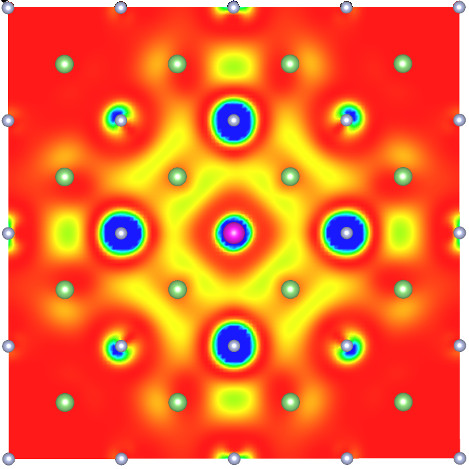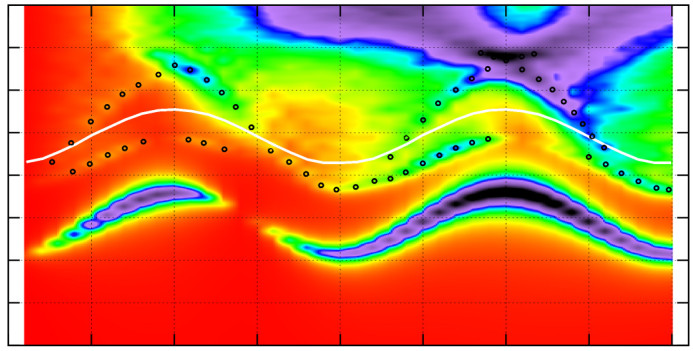
Excitons are bound electron-hole states, that forms upon excitation of the system, when submitted to an external perturbation. The most typical example is given by optical spectroscopy, in which a photon is absorbed and an electron-hole pair is formed. The nature of the exciton is an intrinsic two-particle problem (the electron and the hole): if tackled within Many-Body, it requires the knowledge of the two-particle Green's function, which is normally cast into an equation called the Bethe-Salpeter equation (BSE). The Theoretical Spectroscopy group is a pioneer in the development of the ab initio BSE ( Albrecht et al. Phys.Rev.B 55, 10278 (1997), G. Onida et al. PRL 75, 818 (1995)). Excitonic effects are of paramount importance when dealing with optical spectra of solids, in particular semi-conductors and insulators. But also nano-structured materials exhibit strong effects of the electron-hole interaction, due to the low screening.  But excitonic effects in materials can be revealed not only by optics, but also via scattering experiments, like Inelastic X-ray scattering (IXS) or Electron Energy Loss (EELS). Normally, the most intense part of EELS or IXS spectra is given by the classical plasmons. However, when excitonic effects are strong they are also visible is scattering experiments. Where instead scattering experiment show all their crucial usefulness is in the description of exciton dispersion: being carried out in scattering mode, the momentum transfer $\mathbf{q}$ of the excitation can be arbitrarily big, given the possibility to study the exciton dispersion (this is clearly impossible in resonant experiment, like absorption, for the maximum exchanged momentum is the one of the photon, which is close to zero). For this reason, our group has recently developed an extension of the BSE to treat finite momentum transfer excitations. This, on one side, permits to describe, analyze and predict IXS and EELS experiments; on the other, it opens the way to a complete new sets of spectroscopies (CIXS, RIXS, exciton satellites in PES, etc.) to be tackled with the help of state-of-the-art BSE.
But excitonic effects in materials can be revealed not only by optics, but also via scattering experiments, like Inelastic X-ray scattering (IXS) or Electron Energy Loss (EELS). Normally, the most intense part of EELS or IXS spectra is given by the classical plasmons. However, when excitonic effects are strong they are also visible is scattering experiments. Where instead scattering experiment show all their crucial usefulness is in the description of exciton dispersion: being carried out in scattering mode, the momentum transfer $\mathbf{q}$ of the excitation can be arbitrarily big, given the possibility to study the exciton dispersion (this is clearly impossible in resonant experiment, like absorption, for the maximum exchanged momentum is the one of the photon, which is close to zero). For this reason, our group has recently developed an extension of the BSE to treat finite momentum transfer excitations. This, on one side, permits to describe, analyze and predict IXS and EELS experiments; on the other, it opens the way to a complete new sets of spectroscopies (CIXS, RIXS, exciton satellites in PES, etc.) to be tackled with the help of state-of-the-art BSE.
